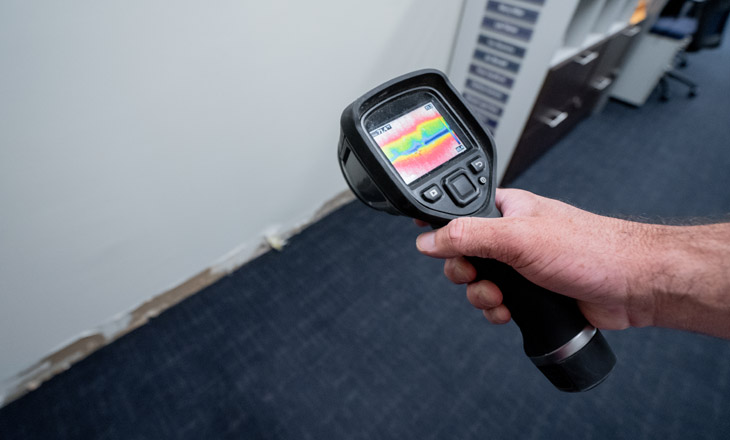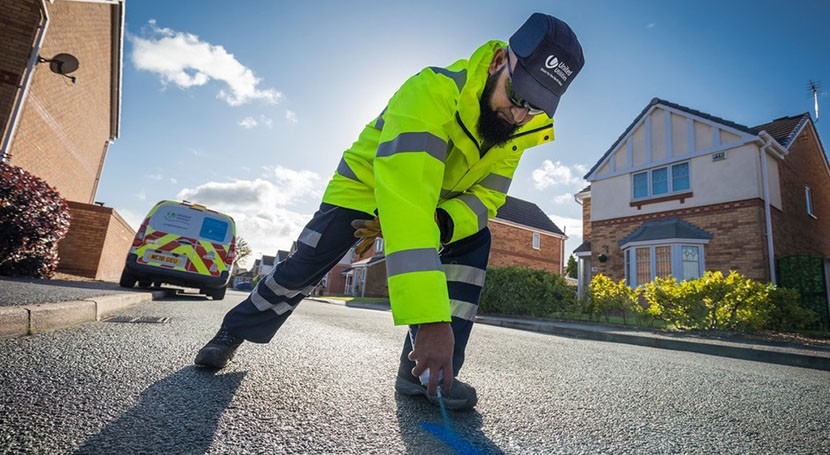Innovative Solutions for Very Early Detection of Water Leakages in Buildings and Facilities
As the integrity of structures and infrastructure is vital, the challenge of very early detection of water leaks has actually spurred innovative options that promise to reinvent the means we secure against prospective problems. From advanced leakage detection modern technologies to the deployment of IoT sensors for real-time surveillance, the landscape of leak prevention is advancing rapidly. Artificial intelligence algorithms supply a glimpse into the future of leakage prediction, while thermal imaging offers a non-intrusive technique for pinpointing surprise leaks. Automated water circulation evaluation systems are reshaping just how leakages are recognized and dealt with, leading the means for a proactive method to water leak discovery. Each of these remedies holds the key to guaranteeing the dependability and long life of our constructed environment, motivating a change towards an extra lasting and reliable future.
Advanced Leakage Discovery Technologies
Advanced leakage detection innovations, geared up with advanced sensors and algorithms, play a vital function in quickly identifying and pinpointing water leakages in numerous settings. These modern technologies employ a mix of acoustic, thermal, and electro-magnetic noticing methods to spot leaks accurately. Acoustic sensing units identify the noise of leaving water, allowing for precise localization of the leakage resource. Thermal imaging discovers temperature changes triggered by water leak, offering another reliable method for leak identification. Electro-magnetic sensing units can identify adjustments in magnetic fields brought on by water, providing yet another layer of leakage detection capacity.

IoT Sensors for Real-Time Tracking
In the world of modern water leak detection, the assimilation of IoT sensors for real-time tracking stands for a crucial advancement in improving positive leakage discovery abilities. These sensing units supply continuous monitoring of water systems, supplying real-time information on water flow rates, pressure variants, and temperature level adjustments. By leveraging IoT technology, these sensors can discover also the tiniest abnormalities in water use patterns, making it possible for very early recognition of possible leakages prior to they intensify right into major issues.
IoT sensing units send information to a central system, where innovative formulas analyze the info and generate alerts or alerts when irregularities are spotted. This real-time monitoring capability permits home owners or facility supervisors to without delay resolve leakages, lessening water damages, lowering fixing expenses, and conserving water sources.
Additionally, IoT sensors can be incorporated with building management systems, enabling automatic reactions to spotted leakages, such as turning off water valves or turning on pumps to reduce the effect of leaks. On the whole, the application of IoT sensors for real-time surveillance substantially enhances the performance and efficiency of water leakage detection in structures and facilities.
Artificial Intelligence Algorithms for Leak Forecast

One trick benefit of making use of equipment discovering for leak forecast is its capability to continuously find out and enhance its accuracy Click This Link gradually. As more information is gathered and fed right into the algorithm, it can refine its forecasts and adjust to changing problems, eventually enhancing the integrity of leak discovery systems.
Additionally, machine understanding algorithms can aid in determining refined indications of leaks that might go unnoticed by standard surveillance methods. water leak detection. By analyzing complicated information sets in real-time, these formulas can offer very early warnings and notifies, permitting for prompt treatment and preventive maintenance to minimize potential water damages and linked costs
Using Thermal Imaging for Leak Discovery
Thermal imaging technology uses a promising method for detecting water leaks in numerous systems and infrastructures. By using infrared radiation and temperature variations, thermal imaging cameras can identify concealed leakages that are not conveniently visible to the naked eye. When water runs away from pipelines or structures, it typically transforms the temperature level of the surrounding area, producing temperature level differentials that thermal electronic cameras can capture. These temperature level irregularities are then equated right into noticeable photos, highlighting the exact location of the leak.
Among the essential advantages of thermal imaging for leak detection is its non-intrusive nature. Unlike traditional methods that might call for burglarizing walls or floors to locate leaks, thermal imaging enables non-destructive screening. This not just saves time and decreases costs but likewise lessens interruption to the building or infrastructure being assessed. In addition, thermal imaging can promptly check big areas, offering an extensive summary of possible leakage sources in a prompt fashion. Generally, the use of thermal imaging technology enhances the performance and precision of water leak detection, making it a beneficial device for maintaining the honesty of structures and frameworks.
Automated Water Flow Evaluation Equipments
Exactly how can automated water flow evaluation systems transform the discovery and administration of leakages in various systems and frameworks? Automated water circulation analysis systems use a proactive technique to leak detection by continually keeping an eye on water flow rates and patterns. By establishing standard data, these systems can swiftly identify variances that may indicate a leakage, enabling punctual intervention to protect against considerable damages.
These systems utilize innovative algorithms to evaluate real-time information and give immediate informs when abnormalities are discovered, permitting swift action to be taken. Furthermore, computerized water circulation evaluation systems can be incorporated with structure management systems or IoT platforms, improving total efficiency and making it possible for remote monitoring capabilities.
Moreover, the information gathered by these systems can be used for predictive maintenance objectives, helping to identify potential weak factors in the infrastructure prior to leaks occur. On their website the whole, the implementation of computerized water flow evaluation systems can considerably enhance leak detection Homepage and administration practices, inevitably causing cost savings, reduced water waste, and increased sustainability in buildings and facilities.

Final Thought
In final thought, the integration of sophisticated leakage detection innovations, IoT sensing units, artificial intelligence algorithms, thermal imaging, and computerized water circulation evaluation systems supplies cutting-edge solutions for very early detection of water leaks in structures and framework. These modern technologies allow real-time monitoring, prediction of leakages, and reliable discovery approaches to avoid water damages and wastefulness. Applying these remedies can assist in preserving the honesty and sustainability of water supply in various setups.
Comments on “Top Water Leak Detection Techniques to Safeguard Your Property from Water Damage”